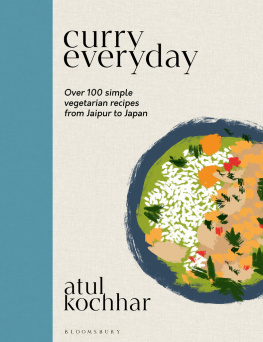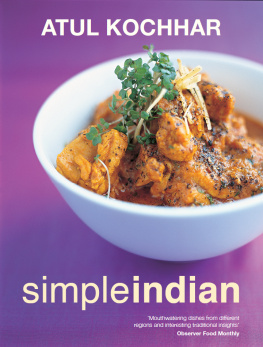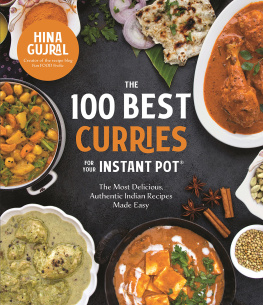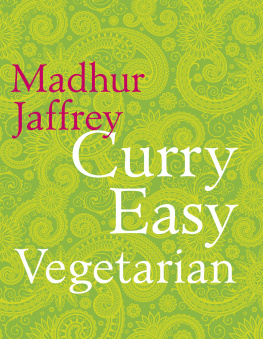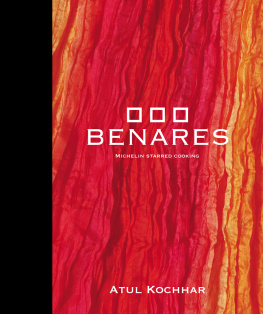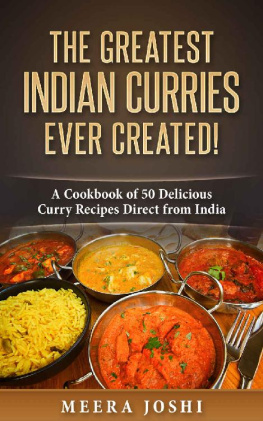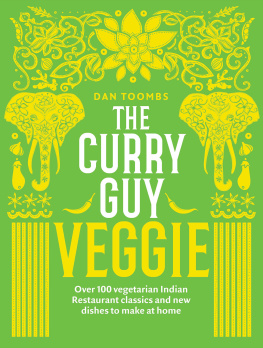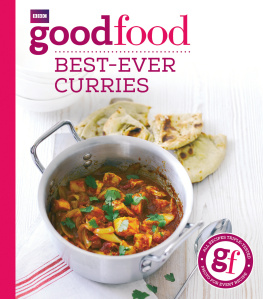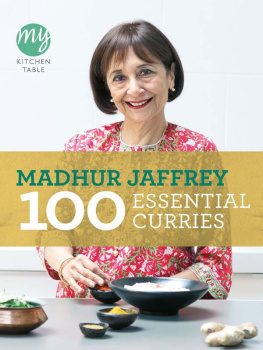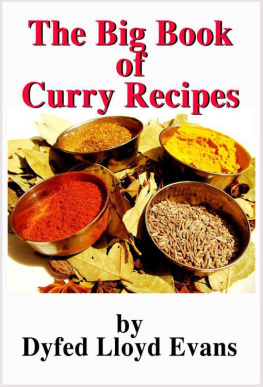I would like to dedicate this book to my wife Deepti and my children, Amisha and Arjun.
Their formidable support has propelled me to the position I am in today. Its truly a privilege to be a husband and father to this family.


contents

For me, curry isnt a term that defines a dish, but, as celebrated Chinese-American chef Ken Hom says, is a term that refers to a style of cookery and not a single taste or degree of spiciness, and that was the basis on which I gathered recipes for this book. Every recipe in these pages is linked loosely by technique and style, ingredients that crop up across countries and continents, and, of course, by deliciousness, too.
In India, a curry traditionally refers to a spiced dish with a sauce, gravy or masala base. Over the years, as the world has opened up through travel, trade, relationships and interaction between countries, Indian cuisine has changed as a direct result of sharing cultures, and, most importantly, ingredients. Through these cultural exchanges, Indian food has, in my opinion, been enriched. In turn, other nations have borrowed from our customs and created curry dishes of their own, many of which have been collected here for you; a trip around the world through curry recipes. You can say that in this cultural exchange, the best bits from various cuisines and cultures have been brought together, and ultimately this book is a celebration of those glorious recipes.
It is only natural that neighbouring countries might have similar approaches to food, and recipes can seem fairly fluid between them. For example, the aromatics used in recipes across Southeast Asia tend to have a common thread, while Malaysian and Indonesian curries have a heavy focus on chillies, coconut and curry leaves. Each country or region has its own rich and complex subtleties; a different focus on sweet, sour and spicy notes, for example. Indeed, as recipes travel, cooks adapt the original and make their own versions more in line with their cuisine or local produce. For example, lentil recipes from different countries might use the same variety of lentils, but the other ingredients and techniques used in their preparation may change. Indeed, from Ethiopia to the UAE and South Africa to Pakistan, the variations are so clear.
In the research and recipe development for this book, I learnt new techniques such as how to make the spicy coriander-chilli sauce . I love that even after all these years, I am still learning in the kitchen, and enjoying different cuisines and ingredients as much as ever.
In the introduction of Curries of the World, I explained in detail how even within India theres huge variation in spices and ingredients from north to south, and this is magnified when viewing curries on a global scale. Of course, geography and regional produce plays a huge part in what we eat, and within this book Ive often substituted ingredients more easily available in the UK than they are in Thailand or Malaysia, for example, but without compromising on the basis of the recipe, and the authentic spices.
On the whole, I think its fair to say that people are now consuming less meat, so it was important to me that this book would be purely vegetarian, and indeed many of the recipes are vegan, too. Among friends and customers at my restaurants, the last few years have marked a definite change in how people eat; we are all becoming much more conscious of the provenance of ingredients, and the impact our food is having on the environment. As a result, I have increased the number of vegetarian and vegan dishes on our a la carte menus, as well as creating vegan and vegetarian tasting menus at most of my restaurants. Its encouraged me and my chefs to get creative, to explore traditional flavours but with different ingredients, and to share these vegetarian dishes with our guests. Gone are the days of a disappointing nut roast or over-baked stuffed mushrooms, as vegetarian food takes on a new life and is celebrated in home kitchens and restaurant dining rooms. A few of particular favourite dishes are Moroccan . Inspired by experiments for this book, some of the recipes have made in on to the menus of my restaurants, too.
Many countries included in this book have always had a more vegetable-led diet than we have in the west, mostly because of the expense and lack of availability of meat. Many of the recipes in these pages are naturally vegetarian, such as Sri Lankan , which is usually made with lamb; both versions are delicious.
I wanted this book to be a reflection of the way we eat now and enjoy food socially, so many of the recipes are designed for sharing and mixing and matching, making them perfect for feeding a crowd. Obviously, recipes from within countries will work well together, but try a global feast with ), but, of course, the choice is yours.
The basis for many of the recipes in this book are the curry and spice powders and pastes (), and it is these that will bring that authentic flavour to each recipe. The different combinations of spices used in various parts of the world will unravel as you experiment with the recipes and work your way around the world, so enjoy the adventure.
Some of these pastes and powders might seem like they make individual recipes more complicated, but they will make such a difference to your cooking, and once made theyre easy to store so youll have them to hand for quick midweek suppers, or for jazzing up roasted vegetables or salads.
And finally, dont forget to make the best use of your freezer fresh herbs, lime leaves, chillies, lemongrass and spice pastes can all be kept in the freezer, reducing waste and extending shelf life.
I hope you enjoy eating your way around the world with these delicious curries happy cooking!
Atul Kochhar,
London

Sweet Potato Curry
goguma kale (kare)

This simple, straightforward recipe has a lovely smoky flavour from the paprika and subtle heat from the fermented chilli paste. Even my teenage son not always easy to please pronounced this good enough to have a second helping. I serve this spooned over freshly boiled with a selection of stir-fried vegetables. Asian pickles alongside are a great accompaniment.
1 tablespoons sunflower oil
1 large onion, finely chopped
3 garlic cloves, finely chopped
1.5cm piece fresh galangal or ginger, peeled and chopped
4 sweet potatoes or about 600g butternut squash, peeled and cut into bite-sized cubes
teaspoon smoked paprika
400ml coconut milk
300ml , ideally home-made
1 teaspoon rice wine vinegar
1 teaspoons runny honey
1 tablespoon Korean fermented chilli paste (gochujang)
1 teaspoon soy sauce
2 tablespoons unsalted skinned peanuts, coarsely crushed, to garnish
chopped coriander leaves, to garnish
Heat the oil in a wok over a high heat. Add the onion, garlic and galangal or ginger, and stir-fry until the onion is translucent. Add the sweet potatoes and paprika and keep stir-frying for 30 seconds to cook the paprika. Watch closely so nothing burns.

